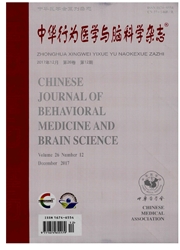

 中文摘要:
中文摘要:
目的:探索城市流动儿童自我认同现状及与家庭因素,亲子依恋和安全感的关系。方法:使用自我认同问卷,亲子依恋问卷,安全感问卷对四川省成都市五所打工子弟学校329名中小学生进行调查。结果:父亲文化程度(β=-.123)、父母感情关系(β=.107)、消极性依恋和依赖性依恋(β=-.137、β=.102)、人际安全感、确定安全感(β=.338、β=.202)可以解释流动儿童自我认同方差变异的35%。结论:不安全亲子依恋关系和流动儿童感受到的不安全感对其自我认同有较大的影响。
 英文摘要:
英文摘要:
To investigate the current identity development status among urban migrant children and to figure out the influencing factors of identity development among this population through exploring its relationship with family-related factors,parental attachment,and sense of security,we conducted a survey of school children in Chengdu,Sichuan.Each class had about 30-40 students,and all the students in the class were asked to finish the questionnaire independently after an explicit introduction of the study and the questionnaire.The questionnaires were collected about 30 minutes later,after all of the participants filled them out. A battery of questionaires,including a self-identity questionnaire,a parental attachment questionnaire and a security questionnaire,were administered to 329 students from five elementary or secondary schools for migrant workers' children.T-test,Pearson correlation,and regression analysis were performed for data analyses with SPSS 13.0.No significant gender difference in sense of security and identity among migrant children was found.But a significant gender difference was noted in intimate and anxious attachment (t=-2.837,p0.01;t=-2.769,p.01).Interpersonal security and determinant security were found to be positively correlated with identity (r=.535,p.001;r=.475,p.001)significantly.Intimate and dependent parental attachment had positive correlations with identity(r=-.191,p0.001;r=-.192,p.001),while negative correlations were found between identity and avoidant and anxious parental attachment(r=-.344,p.001;r=-.116,p.05).The present study showed that father's education level(β=-.123,t=2.727),parental emotional relationship(β=.017,t=.358),avoidant (β=-.137,t=-2.617**) and dependent attachment(β=.102,t=2.123),interpersonal security(β=.338,t=5.468) and determinant security(β=.202,t=3.402) could explain 35% of variance in urban migrant children's identity.No significant gender difference was found in identity among migrant children.In terms of pa
 同期刊论文项目
同期刊论文项目
 同项目期刊论文
同项目期刊论文
 期刊信息
期刊信息
